Technologies
How I Learned to Hate Cars, and What I’m Doing About It
Commentary: My journey down the anti-car rabbit hole.
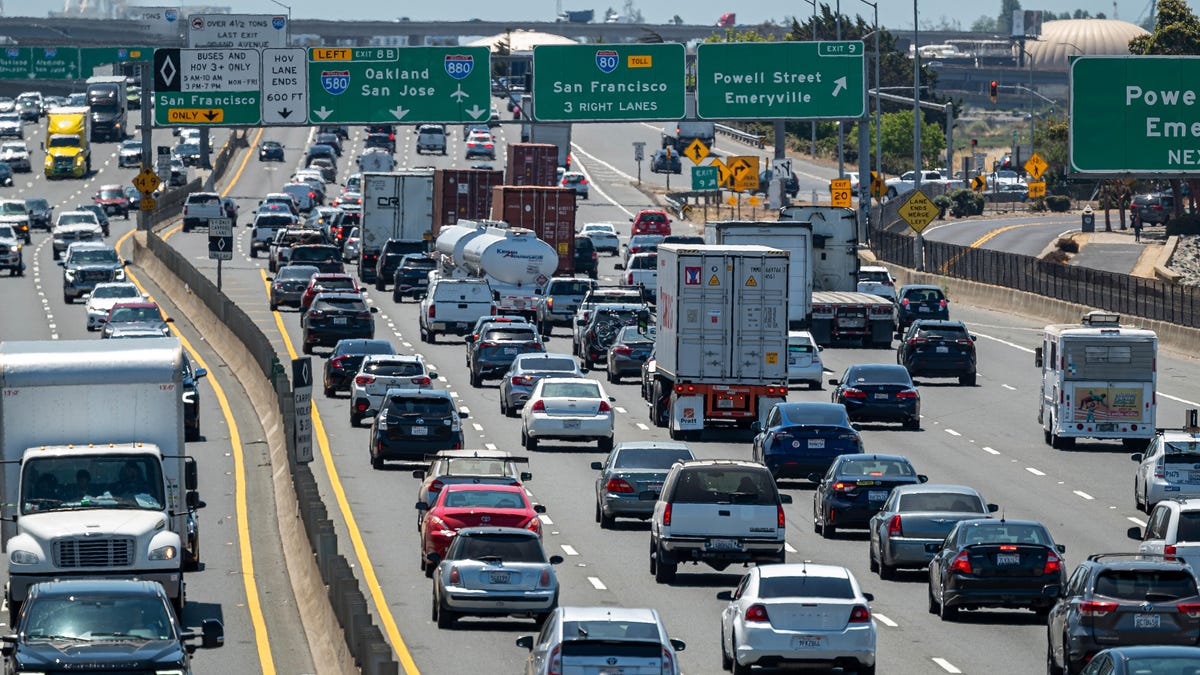
I hit a moving car the other day. Not with my own car – with my hand. More of a reproachful slap, really.
I was on my bike, squeezed perilously among traffic-stalled cars. A zombie driver, briefly reanimated by the thrill of a green light, nearly drove me off the road. I swerved into a parked car, wondering as I caught my balance and my breath – did anyone in this rush hour hellscape even care if I was, ya know, fatally injured?
At the next red light, I caught up with the car and, in a decisive moment of self-righteous rage, enacted a bit of corporal punishment on its right bumper. It felt amazing.
Read more: High Gas Prices Are Revving Up This Online Anti-Car Movement
This feels like an opportune time for a record scratch freeze-frame and an «I bet you’re wondering how I got into this situation» voiceover.
This wasn’t the first time a car had given me a life-flashing-before-my-eyes moment of panic, and it certainly won’t be the last. Motor vehicle crashes are a leading cause of death for Americans ages 5 to 24, making cars a menace not just to cyclists but also pedestrians and even other drivers.
When you combine the grim safety stats with the motor vehicle’s myriad other sins –one-third of US greenhouse gas emissions, the utter depravity of paving paradise to put up a parking lot and so on –a portrait emerges of the car as not an achievement of human ingenuity, but a pretty good scapegoat for… just about everything. And, as I learned by going down a vibrant and inspiring online anti-car rabbit hole, it turns out I’m not the only one coming to this particular conclusion.
Two wheels good, four wheels bad
About a year ago, I moved to a very bike-friendly neighborhood in bike-friendly(ish) Sacramento –decent infrastructure, flat roads, temperate climate, good building density –and almost overnight became a smug cycling evangelist. «We are within biking distance of three grocery stores,» I tell everyone back home, «and Target.» I notice things now like well-placed bollards and accessible bike parking, and I often indulge in delicious indignation when someone blocks a bike lane with their trash can. My local farmer’s market has a free bike valet. I’ve even realized a latent yet lifelong dream of biking my son to school every day.
Speaking of my son, my little sponge-brained 3-year-old now regularly asks why people are driving when they ought to be biking, and I couldn’t be more proud. The two of us stumbled upon a vintage car show one morning and he turned to me and said, in his earnest toddler lilt, «We don’t like cars, right, Mama? We like bikes and walking.» And I was just like, yes, child, yeeeeessss.
But it wasn’t just my new two-wheeled lifestyle that stoked my dormant disgust for car dependence. The story of my radicalization really begins, as these stories often do, on Twitter.
Back when my Twitter feed actually showed tweets from people I have elected to follow, I noticed that two of my IRL acquaintances from past lives had begun to post often about their own bike commutes, advocating for better infrastructure and occasionally complaining about entitled drivers. I was intrigued by their car-free existences and fancy e-bikes with endless permutations of cargo racks and child seats.
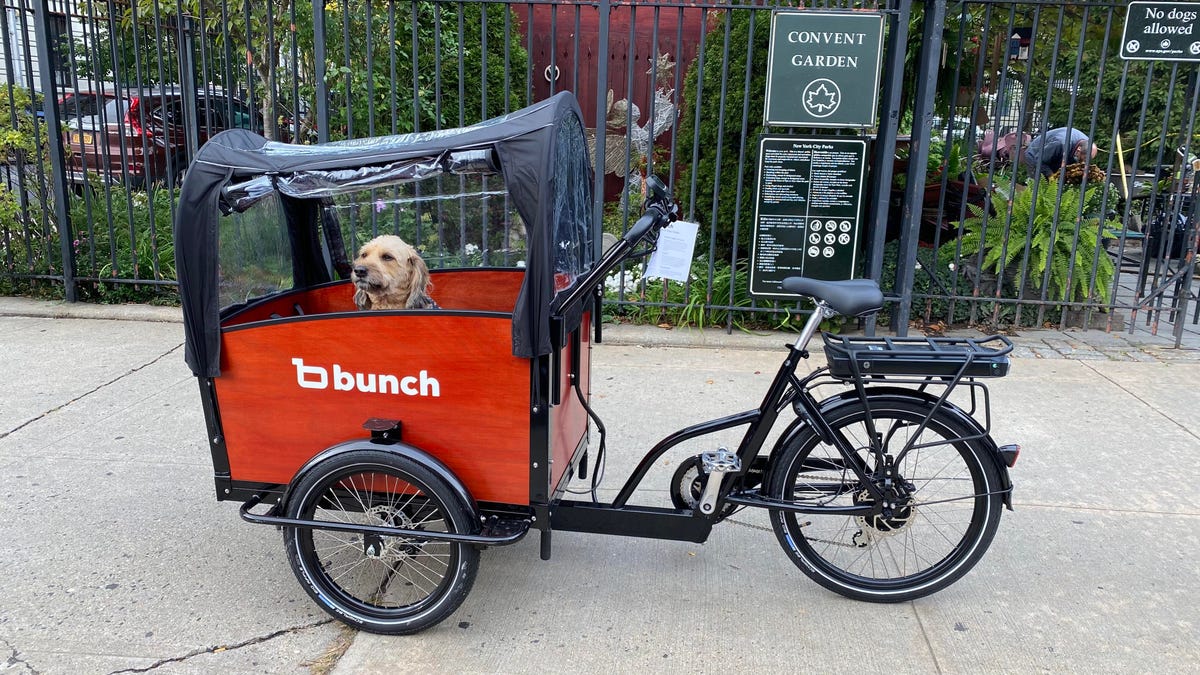
Over time, I began seeing their posts more frequently, alongside similar tweets from accounts like American Fietser and Cars Destroyed Our Cities and even the World Bollard Association. I clicked. I followed. I engaged. Then these two IRL acquaintances started tweeting at each other. I was witnessing the almighty algo at work in real time, and for the first time it felt more invigorating than bleak.
Soon, I found myself consuming memes on r/fuckcars, bingeing the Not Just Bikes YouTube channel, following Strong Towns on Instagram, signing up for the Our Built Environment Substack, subscribing to The War on Cars podcast and more. I started explaining to anyone who would listen why parking requirements are to blame for most societal ills. I developed strong opinions about bike rack design. I dropped the word «stroad» into casual conversation.
In the span of only a few weeks, I went from proverbial Prius Lover to Car Destroyer on the pro/anti-car political compass I found on the Fuck Cars feed. And I started to wonder… had I been radicalized?
80% of americans are «Traffic Burnout» pic.twitter.com/JPKkMSQBTs
— FuckCars (@FuckCarsReddit) February 14, 2023
I’m not the only one asking that question. A sampling of other tweets to cross my algorithmically programmed feed: «can’t believe i’m finally being radicalized online and it’s by the @FuckCarsReddit,» and «NotJustBikes had radicalized me more then [sic] anything else in recent times,» or my favorite, «You watch one video on zoning laws in Japan and then suddenly it was 2am and I’m all like ‘it’s so true bestie, the suburban experiment *is* an anti-human ponzi scheme.'»
can’t believe i’m finally being radicalized online and it’s by the @FuckCarsReddit
— Tori Hoover (@torihoover) February 2, 2023
NotJustBikes had radicalized me more then anything else in recent timeshttps://t.co/fRtgVBZ08A
— Jazz (@JazzToTheTwo) December 22, 2022
You watch one video on zoning laws in Japan and then suddenly it was 2am and I’m all like “it’s so true bestie, the suburban experiment *is* an anti-human ponzi scheme”
— steveklabnik (@steveklabnik) March 25, 2022
So what’s going on here?
Help, I’m orange-pilled
«These days it sometimes feels difficult to have your mind blown by a small observation,» the anonymous moderators of the Fuck Cars Twitter account told me. (Anonymity allows them to facilitate conversation, rather than making them spokespeople for the cause, they say.) «But r/fuckcars is full of mind-blowing realizations.»
It’s true. Did you know the average cost to operate a new car is almost $11,000 every year? Or that an urban resident who swaps the car for a bike for just one trip a day would save the equivalent emissions of a flight between London and New York every year? (And no, EVs won’t save us.)
And did you know (I’m shaking you by the collar here) the concept of «jaywalking» was invented by the auto industry as one part of a coordinated effort to use the very fabric of our city design to maximize profits? European cities like Amsterdam represent both a bygone dream and an idyllic vision of the future; after all, we didn’t design US cities for the car –we bulldozed them to accommodate it.
Cars turned our cities into desolate places pic.twitter.com/W3D9979AZ0
— Metro Atlanta Against Sprawl 🌳🚲🚉🚌🙏🏾 (@walkabilityfan) July 30, 2022
Car dependency is bad on so many levels: It excludes the old, the young and the disabled from moving freely in ways public transit doesn’t, and it disproportionately taxes the poor. Car infrastructure is incredibly expensive. Being stuck in traffic is no one’s idea of a good time. And car-centered city design is isolating and just plain ugly. (Two words: Urban. Sprawl.)
«Like everyone else in suburbia, you were born into bondage,» proclaims Jason Slaughter in the Not Just Bikes YouTube channel’s foundational text on car dependency, «born into a prison you cannot escape without a motor vehicle.» It is tongue-in-cheek, a self-proclaimed «shitpost» of a video that introduces the «orange pill,» playing off that much-referenced Matrix monologue, but there’s something to it. Orange-pilling (not to be confused with the Bitcoin version of the orange pill, which I can only assume has worse side effects) might share the aesthetics of a conspiracy theory, but –and yes, I know this is something a conspiracy theorist would also say –it’s all true.
«Many of the mods were ‘radicalized’ by NJB’s [Not Just Bikes] Jason Slaughter,» a Fuck Cars moderator told me. «One of our mods actually remembers coming home from a trip to the low-car parts of Europe, and being disgusted and depressed by the frankly ugly car infrastructure, but not being able to explain why it was so bad. Then NJB came along, and suddenly we not only know how to explain what makes it bad, we can’t stop seeing it everywhere.»
The causes of our car-dependent hell are complex and diverse. It’s a real We Didn’t Start the Fire situation: oil shocks, white flight, assembly line automation, tax subsidies, «urban renewal,» the Federal-Aid Highway Act of 1956… I’m still in perpetual Math Lady meme mode with this stuff. My mind is newly blown every time I engage with the podcasts, newsletters and tweets the algorithms have hand-curated for me in my cozy little filter bubble. Everything makes sense now: The anti-car movement was the missing piece all along.
Fuck cars, amirite?
The Fuck Cars subreddit, founded in 2016, is a virtual utopia of its own, filled with «infrastructure porn» and likeminded urbanists who toss around references to the Jevons paradox and believe «Cars should be a last resort, not a first option.» In Fuck Cars world, car crashes are not «accidents» and people are categorized as YIMBYs and NIMBYs, not Democrats and Republicans.
Despite its name, the community’s end game is decidedly not to ban all cars. Instead, they advocate for a world where driving a car is a choice, not the only option. It’s the kind of freedom I discovered when I moved to Sacramento, not the kind of freedom many drivers falsely convince themselves they can access behind the wheel of an oversized pickup truck.
There’s no real «us versus them» in the anti-car movement, because –paradoxically, poetically –even drivers would benefit from people-first infrastructure. «Would you rather drive to work on a lean, free flowing road or a huge, congested freeway?» the subreddit FAQ asks. «It turns out expanding highways and building more roads actually makes traffic worse due to induced demand.»
In other words, those who have to drive would have a better time of it if the rest of us could get out of their way. That means investing in bike-friendly infrastructure, public transit and overall walkability.
One way of doing this, according to Debra Banks, executive director of Sacramento Area Bicycle Advocates (the organization behind my farmer’s market’s bike valet), is by lowering speed limits. Another is a «road diet,» or decreasing a road’s width or number of lanes.
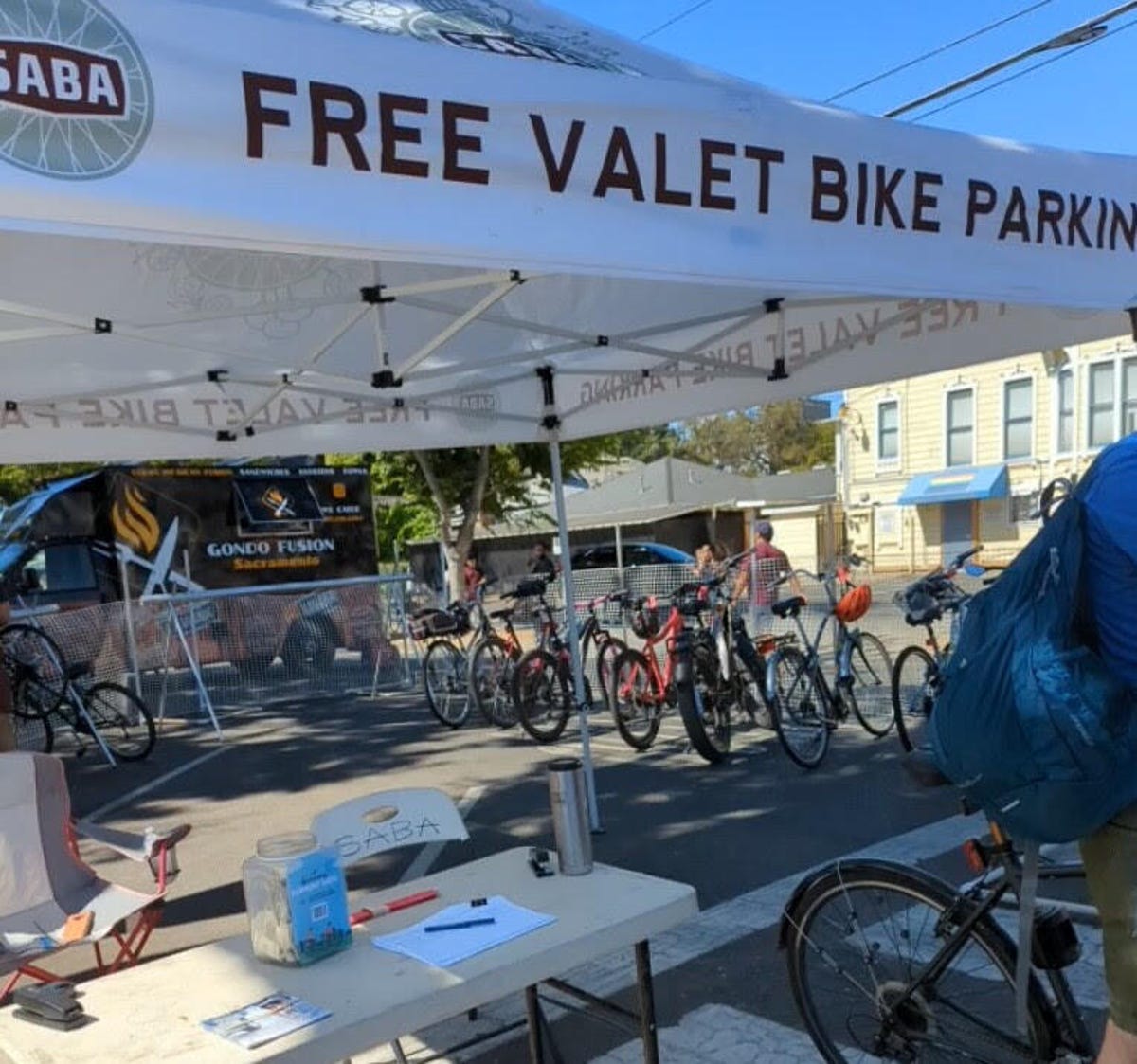
«We’ve advocated for closing streets to cars and have worked with our city and county electees to complete a low-stress bicycle network, which would allow people to safely trade their car keys for a bike to make short trips around town,» Banks said. «But implementation has been very slow. Actions lag far behind plans and discussion.»
The anti-car movement may be exploiting the tools of online radicalization. It’s got the memes, the Matrix riffs, the provocative subreddit titles. (One Fuck Cars moderator points out an issue with milder options: «‘r/urbandesignshouldbeforpeople’ or ‘r/carsusespaceinefficiently’ would be harder to remember.») But if you ask me, the ends justify the means.
For perspective, the Sacramento Mayors’ Commission on Climate Change recommends 40% of trips be via «active transportation» (walking, cycling and so on) by 2045, and another 50% by public transit. Those numbers today are closer to 10% and 4%, respectively. That leaves 86% of car trips, which need to go down to a seemingly impossible 10%. If some snarky tweets can nudge the needle in the right direction, send in the shitposts. Come for the outrage, stay for the political action.
Are you with me? We ride (the bus) at dawn
Still not convinced? «Go to a store in a manner that is not a car,» the mods recommend. «See how lovely it is outside, but also what challenges you face by taking the simple act of avoiding a car for one trip. How did this make you feel? The more you utilize what a city offers, the more you will want to change.»
It was at this point I realized that maybe I was giving Twitter too much credit. I’d tried biking and taking public transit to the grocery store in other cities I’ve lived in, and it wasn’t easy. It’s not just that the infrastructure wasn’t there, but the trip was so inconvenient that I felt I had to really stock up, which meant lugging enough groceries home to fill the cab of an F-150. Perhaps a lifetime of frustration without an obvious cause («car blindness,» the phenomenon is called) was my camel, and the anti-car movement was merely the straw that broke its back.
I asked the Fuck Cars folks how to channel all the rage their memes have galvanized. Their subreddit FAQ has a ton of resources on how to make your community less car-centric and how to be less car-dependent in your daily life. You can spread the word on your own Twitter feed. You can make the maps of your neighborhood more conducive to non-car travel. You can even skirt the law and fashion your own protected bike lanes.
But their No. 1 piece of advice is to work at the local level.
«Talking to your city council has a much bigger impact than you would think,» the mods told me. «They usually hear from so few of the populace that whatever you say can have a big impact on their mode of thought.»
Banks agrees: «It is easy to be a critic, but that doesn’t help unless you take action,» she said. «The democratic process means you need to take the long view and stick with the things you want to advocate for.»
Situations like this have us directing short term anger at the driver, but let’s not forget that design directs behavior.
Channel your frustrations with city hall.
They enable this through design. https://t.co/IOl7evsvZ3— American Fietser (@AmericanFietser) June 29, 2023
A few weeks ago, I caught another mom at school pickup ogling my child bike seat. It was the closest I’ve ever come to understanding the thrill of being a gearhead showing off their car. «I love your bike seat!» she said.
At first I felt pleased with myself for having such a sweet setup, like I’d joined the ranks of those Twitter acquaintances with their fancy e-bikes. But then she added «I’m just too nervous to bike with my kid in traffic,» and my pleasure was eclipsed by the understanding that we have so much work left to do. There’s a long road ahead –a stroad, if you will –paved with two generations of infrastructure and political inertia.
But there is relief in giving the problem a name, and coming together online with others who share the same frustrations and the same urbanist utopia dream. I know now that it’s not an individual problem but a systemic one, and though I still get a thrill from yelling «this is a bike lane, asshole!» to delivery trucks with their four-ways a-flashing, I understand now that there are better ways to cope than by slapping a car.
Correction, 2:55 p.m. PT: This story originally misstated the age range for deaths caused by motor vehicles. Motor vehicles are a leading cause of death for those ages 5-24.
Technologies
These Anker Earbuds Are Down to $57 — and Even Amazon Couldn’t Resist Matching the Price
Grab yourself a solid pair of earphones that offer excellent noise cancellation and battery life.
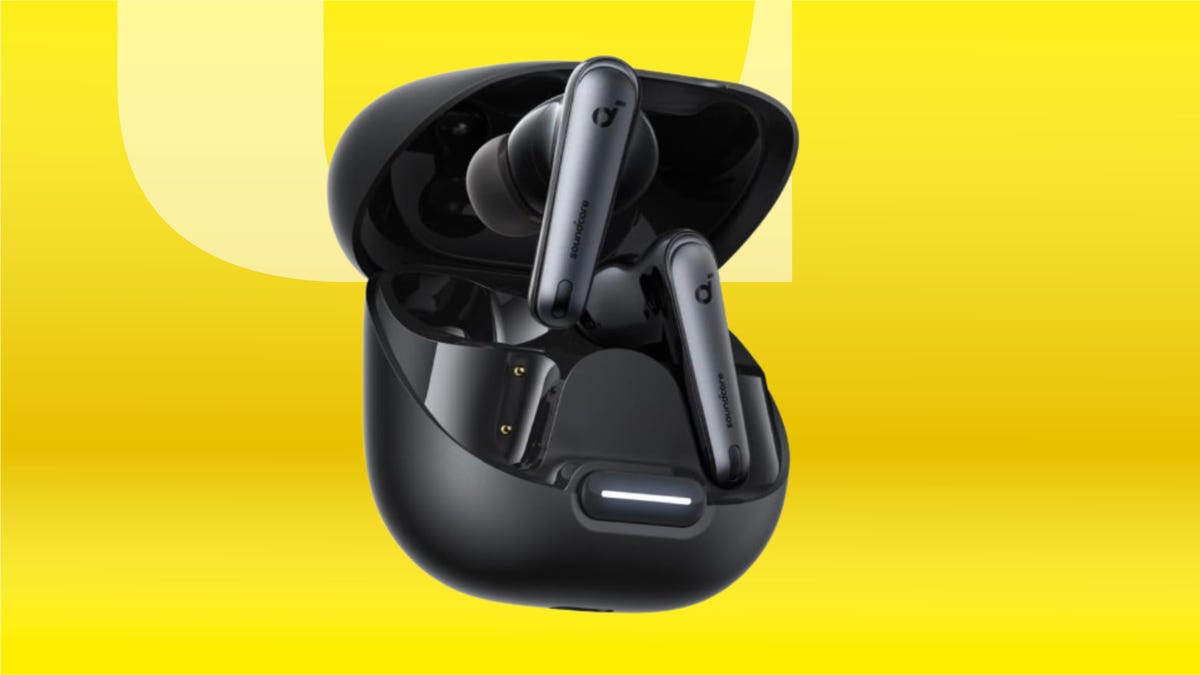
There are plenty of earbud options out there, but finding the right ones for you can feel nearly impossible as a result. But if you’re after some of the best noise-canceling wireless earbuds and you’d like to save some money, we might have the answer for you.
Best Buy is running a one-day sale on the excellent Anker Soundcore Liberty 4 NC earbuds, knocking the price to just $57 — which matches the lowest price we’ve seen yet. And Amazon’s price-matching. With a 43% discount, now’s the time to grab a pair before this limited-time deal disappears.
These earbuds have 11mm drivers, as well as hi-res wireless, LDAC technology and adaptive noise canceling that should reduce noise from your environment by up to 98.5%, according to Anker. That means you can stay immersed in the music (or other content you love) regardless of what’s going on around you.
Plus, because they’re equipped with six mics, they offer good call quality, regardless of your environment. We found them comfortable, too, and loved the bass they put out.
Hey, did you know? CNET Deals texts are free, easy and save you money.
The Liberty 4 NC earbuds have an impressive battery life as well, offering up to 10 hours of playback per charge, with an additional 50 hours available with the charging case. And just 10 minutes of fast charging can get you up to four hours of playback. They’re also rated IPX4 water-resistant, so any inclement weather while you’re out shouldn’t cause these buds any harm.
Another great feature these earbuds offer is multipoint connection, which lets you connect to your phone and your computer at once, which is super convenient. That’s a lot of features for earbuds this affordable.
If you’re not totally sold on this model, be sure to check out our roundup of all the best headphone and earbuds deals happening now.
HEADPHONE DEALS OF THE WEEK
-
$300 (save $51)
-
$299 (save $151)
-
$220 (save $180)
Why this deal matters
These excellent earbuds are now available at their record-low price. Best Buy is limiting this discount to a one-day sale, and we expect Amazon to end the deal around the same time, so be sure to grab a pair before this opportunity expires.
Join Our Daily Deals Text Group!
Get hand-picked deals from CNET shopping experts straight to your phone.
By signing up, you confirm you are 16+ and agree to receive recurring marketing messages at the phone number provided. Consent is not a condition of purchase. Reply STOP to unsubscribe. Msg & data rates may apply. View our Privacy Policy and Terms of Use.
Technologies
The Apple Watch Ultra 3 Just Got Its First Proper Discount, but It Won’t Last Long
The latest rugged smartwatch from Apple is yours for just $700 right now.
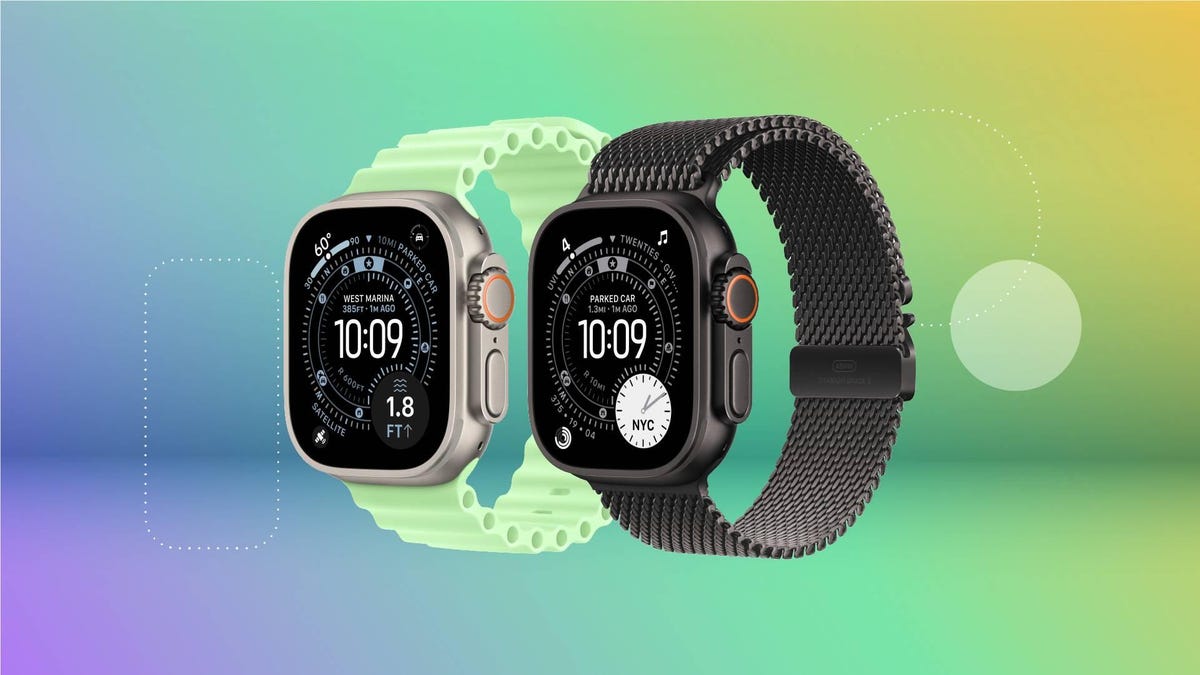
The Apple Watch Ultra 3 has only been on sale for a few weeks, but it’s already available for its first real discount. Getting one of the best smartwatches money can buy isn’t going to be cheap, but this deal saves you $99 off the usual asking price. But be warned, we don’t expect this early Black Friday deal to last long.
The result? You’ll pay just $700 for your new Apple Watch Ultra 3, with a couple of colors and band combinations available. These prices often fluctuate, so we suggest checking out all available pairings before placing your order. Apple Watch Ultra 3 deals are likely to come and go quickly.
All Apple Watch Ultra 3 models come with cellular modems inside so you can connect them to your carrier — assuming it supports the Apple Watch’s eSIM. That’ll allow you to stay connected even when you don’t have your iPhone with you.
Hey, did you know? CNET Deals texts are free, easy and save you money.
The Apple Watch Ultra 3 comes in a large 49mm size, so it’s easy to read. Despite that huge display, Apple Watch Ultra 3 owners can expect long-lasting battery life. In fact, the Apple Watch Ultra 3 can run for up to 42 hours in normal mode and a whopping 72 hours in its low-power mode.
This being an Apple Watch, it comes with all of the usual health and fitness monitoring features, as well as sleep tracking. It can monitor your heart rate, track your progress thanks to its precise dual-frequency GPS, and do a whole lot more.
If the standard Apple Watch models can’t quite live up to your busy, active lifestyle, this is the model for you. Be sure to order your new smartwatch before this deal expires.
SMARTWATCH DEALS OF THE WEEK
-
$329 (save $100)
-
$200 (save $100)
-
$200 (save $100)
-
$500 (save $150)
Why this deal matters
The latest Apple Watch Ultra 3 is the best of its kind. It has a new display that’s designed to be easier to read and has an impressive battery life. It isn’t the cheapest smartwatch on the market, but if you want the best that Apple has to offer, now is the time to place your order — before this deal ends.
Looking for savings on other models? Check out all the best Apple Watch deals happening now.
Join Our Daily Deals Text Group!
Get hand-picked deals from CNET shopping experts straight to your phone.
By signing up, you confirm you are 16+ and agree to receive recurring marketing messages at the phone number provided. Consent is not a condition of purchase. Reply STOP to unsubscribe. Msg & data rates may apply. View our Privacy Policy and Terms of Use.
Technologies
Here’s the Best Time to Spot November’s Supermoon, the Brightest Moon of 2025
Does the moon look brighter and bigger? It’s not just you — here’s why this month’s supermoon is even more super.

November is a great month for skygazers, featuring a trio of meteor showers and the return of the northern hemisphere winter constellations. This week, it also features the second of four consecutive supermoons. This month’s supermoon will happen on Nov. 4-5, and November’s beaver moon is special because it’ll be the brightest full moon of 2025.
Don’t miss any of our unbiased tech content and lab-based reviews. Add CNET as a preferred Google source.
In addition to being a supermoon, November’s full moon is known as the beaver moon. There is some debate as to why it was named this way. Some believe that this was the best time of year in the old days to set beaver traps to get pelts for winter clothing. Others believe that it coincides with the busiest part of the year for beavers, who are now stocking their lodges with supplies for the upcoming winter.
The brightest supermoon: When’s the best time to see it?
The moon will reach peak illumination at 8:19 a.m. ET on Nov. 5, making the evening of Nov. 4 and the morning of Nov. 5 the best times to view the moon.
Since moon phases shift slowly, the moon will appear almost full for nearly a week. If you are unable to view the full moon on its best night due to weather or other reasons, you can still see a mostly full moon at any point from Nov. 3 to Nov. 8.
For all of those days, the moon will be measurably brighter in the night sky compared to any other full moon in 2025. The reason for this is because of the moon’s elliptical orbit. Since it’s not a perfect circle, the moon’s 27.3-day journey around the Earth brings it closer to us on some days, a phenomenon known as perigee. If there is a full moon during this time, it’s branded as a «perigean full moon,» which you may know better as a supermoon.
Not all supermoons are equal, and November’s will be a little more special than others. According to The Farmer’s Almanac, the beaver moon will be a scant 221,817 miles away from Earth, making it the closest full moon of the year. That means it’ll be the biggest and brightest of the year.
In practice, the differences are fairly minor and likely won’t be visible to the naked eye when compared side by side to other supermoons. A supermoon is only about 7% larger than a regular full moon. According to NASA, the biggest difference is when comparing a supermoon to a micromoon, where a supermoon will be about 14% larger and 30% brighter. So, if you notice that your backyard patio is lit up more than usual, it’s because of the supermoon.
Also due to the moon’s orbit, November will also bring a micro new moon, which means the moon will be as far away from the Earth as it can get — a phenomenon known as apogee. November’s new moon occurs on Nov. 20, but you won’t be able to see it.
-

 Technologies3 года ago
Technologies3 года agoTech Companies Need to Be Held Accountable for Security, Experts Say
-

 Technologies3 года ago
Technologies3 года agoBest Handheld Game Console in 2023
-

 Technologies3 года ago
Technologies3 года agoTighten Up Your VR Game With the Best Head Straps for Quest 2
-

 Technologies4 года ago
Technologies4 года agoVerum, Wickr and Threema: next generation secured messengers
-

 Technologies4 года ago
Technologies4 года agoBlack Friday 2021: The best deals on TVs, headphones, kitchenware, and more
-

 Technologies4 года ago
Technologies4 года agoGoogle to require vaccinations as Silicon Valley rethinks return-to-office policies
-

 Technologies4 года ago
Technologies4 года agoOlivia Harlan Dekker for Verum Messenger
-

 Technologies4 года ago
Technologies4 года agoiPhone 13 event: How to watch Apple’s big announcement tomorrow
